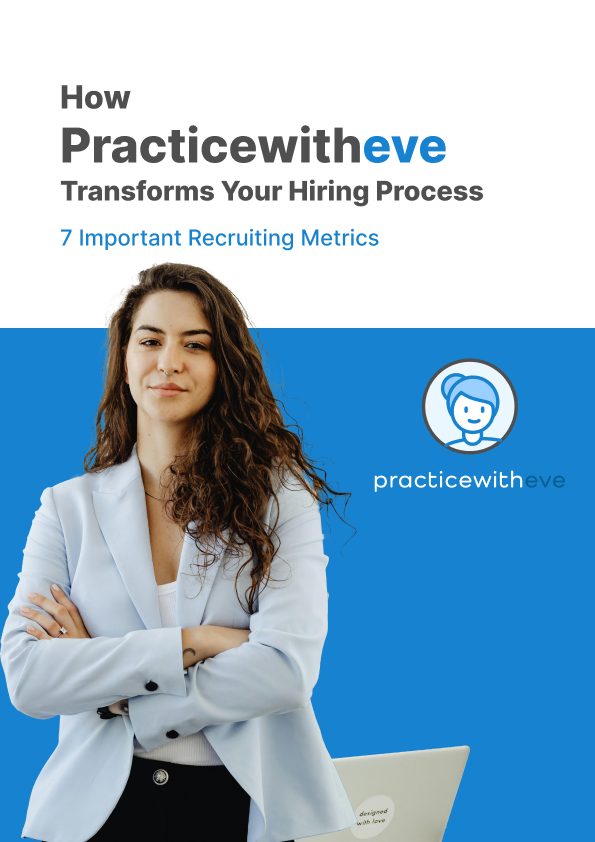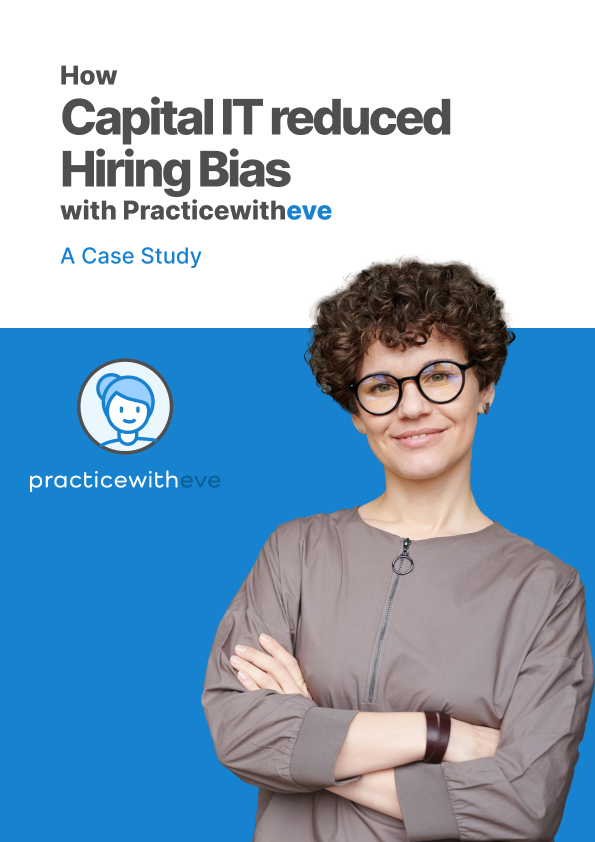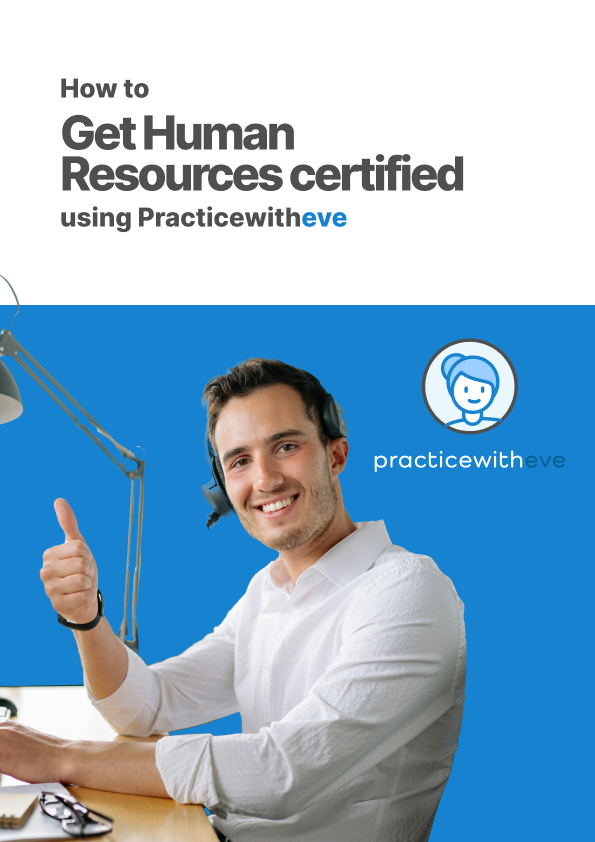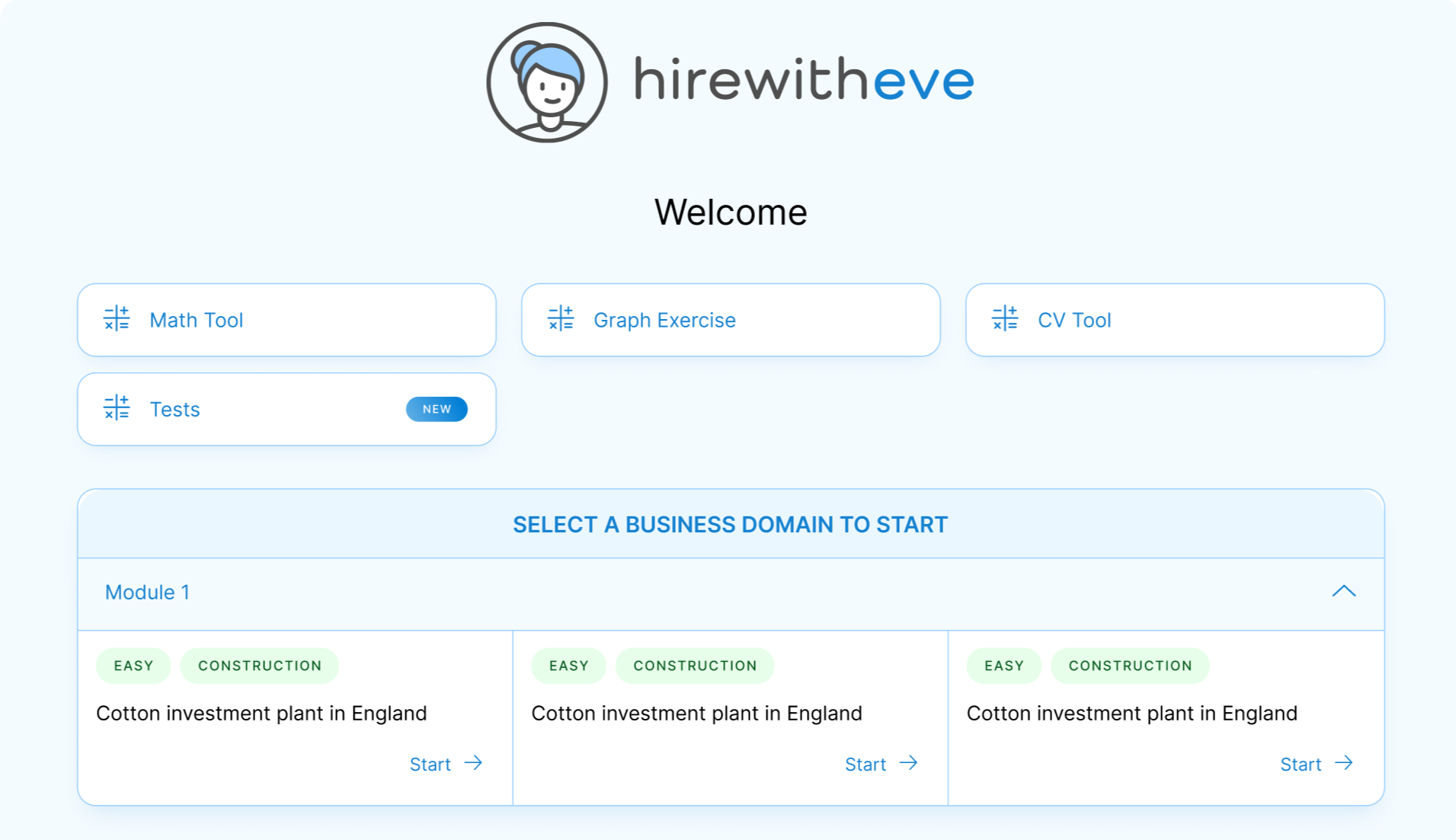Ultimate Guide to Organizational Planning & Talent Assessment

Share
In today's fast-paced business world, companies without detailed organizational plans are essentially planning to fail. You might think that "winging it" is uncommon, but a survey from Bridges Consultancy found that only 48% of businesses achieve planning success. This stark statistic underscores the importance of meticulous organizational planning.
So, how can you give your business the best possible chance of reaching its goals?
The answer lies in creating a robust organizational plan. Organizational planning enables you to execute your business strategy, clearly communicate objectives to every team member, and ensure a well-defined process. It also helps you account for contingencies should the worst happen.
In this comprehensive guide, we will explore the intricacies of organizational planning, why it's essential, and how to create an effective plan. We'll also discuss how skills testing can play a crucial role in your planning process, and why HirewithEve is the right fit software for your talent assessment needs.
Table of contents
Introduction to Organizational Planning
The Importance of Organizational Planning
Types of Organizational Planning
Organizational Plan Examples
Steps to Create an Organizational Plan
Organizational Planning and Talent Assessment
FAQs about Organizational Planning
Conclusion
Introduction to Organizational Planning
Organizational planning is a roadmap for your complex, long-term business objectives. It helps your organization define success, prepare for the future, and attain goals amidst shifting market conditions. An effective organizational plan also guides change management, organizational structure, and initiatives like company-wide restructuring.
However, nobody likes complicated plans. Good planning involves setting goals that are simple, measurable, and attainable and includes contingency planning to mitigate risks.
In essence, an organizational plan prevents your team from wandering, and unsure of their roles, responsibilities, or expectations. Careful organizational planning steers the company in the right direction.
The Importance of Organizational Planning
A solid organizational plan improves your company’s performance and boosts financial figures. Research shows that businesses with strong plans are 16% more likely to succeed than their peers.
Organizational plans also clarify the roles and responsibilities of employees in your organization. For example, while both your sales and support teams strive to increase business revenue, a strategic plan ensures everyone understands that the sales team's role is to convert new customers, while the support team is responsible for keeping customers happy and upselling more profitable services.
Moreover, a business organizational plan empowers your company to stay flexible with shifting markets and global disruptions. You’re more resilient thanks to contingency plans, which enable you to follow a defined “plan B” when adopting new technology, launching innovative products and services, and filling new roles.
Types of Organizational Planning
Strategic Planning
Every great business idea starts with a carefully considered strategy. Organizational strategic planning involves creating broad, long-term goals for your company. These goals should cover the next five to ten years. An example of a strategic goal might be to “become the leading brand in terms of sales and brand recognition in the electronic consumer goods sector within five years.”
Strategy is usually overseen by senior management and C-level executives. A strategic plan sets the vision that the entire company needs to follow to achieve long-term success.
Tactical Planning
Next, transform your high-level strategy into tactical steps that empower your organization to reach its long-term goals. Your strategy consists of multiple tactical plans, each typically taking up to a year to complete. Middle managers generally establish objectives and guide their teams to accomplish them. Senior management uses metrics and key performance indicators (KPIs) to track progress and ensure that tactical plans are inching the company closer to its final goal.
Operational Planning
Operational planning sets up a roadmap at the departmental or team-specific level. These are the daily and monthly objectives to be checked off by finance, marketing, IT, sales, and other departments. Using the example strategic goal from above, an operational goal for marketing could be to “boost brand awareness by 0.5% each month.”
Contingency Planning
Even the best plans can be derailed by unexpected market forces or unforeseen events. This is why you must always prepare your organization to deal with uncertainty with contingency planning. Including meticulous risk management as part of your organizational plan helps you rise above your competitors when times get tough. It gives your people structure and processes to follow when the unexpected strikes.
Organizational Plan Examples
Workforce Development Planning
During workforce development planning, you identify and address current and future staffing needs. This involves implementing talent planning strategies to enhance your employees’ skills, knowledge, and abilities to stay relevant in your industry. It begins by assessing the capabilities of your current workforce. This translates into creating a comprehensive talent map for all employees, including your C-level team members. The goal is to understand your talent baseline, identify skills gaps, determine what kind of training workers require to acquire new skills, and whether you require external hires to meet your workforce needs.
A talent assessment tool, like HirewithEve's library of over 400 candidate-friendly skills and personality tests, is highly recommended. This modern, efficient, and bias-free way to measure your people’s skills helps pinpoint strengths and weaknesses within your workforce.
Once you’ve established a skills baseline, create two plans: a learning and development plan and a talent acquisition plan. Continuously upskilling your workforce and hiring top external talent helps you stay relevant, successful, and profitable. Additionally, prepare skilled employees to quickly fill crucial vacant roles in the organization. This is a pivotal part of contingency planning because it enables you to quickly fill roles that are critical to your company’s success.
Financial Planning
Your organization can’t get far without a robust financial plan. Managing debt and reinvesting profits are two of the best ways to ensure your business is sustainable. A financial plan assesses and estimates your future revenue, profit margins, and expected expenses, including employee salaries. It also helps you research and evaluate strategic investments to strengthen your business and drive more revenue. Financial analysts create these plans, so seek their recommendations about financial performance and how to optimize your overall decision-making processes.
Products and Services Planning
Your business aims to make its products and services more appealing to target audiences. To do so effectively, recognize gaps in the market and strategically create schemes that set your business apart from competitors. Start by analyzing how your products and services are performing in your respective markets. Are they doing well, or are they struggling? Markets and trends change, so you need to be aware that you might need to adapt your products regularly to best serve your customers.
Once you determine the size of the gap, decide whether:
Your product is well-suited to your audience and doesn’t need updates for now.
You need to modify your offering to better serve customer demands.
You must innovate and launch another product or service.
Developing an updated or new product or service requires extensive testing to achieve a solid product-market fit, so include this in your organizational plan.
Expansion Planning
A good business is always focused on growth. Expansion plans identify growth opportunities and roadblocks your organization might face in its industry, helping you develop marketing strategies or other initiatives to take advantage of those opportunities and overcome obstacles. Expansions require hiring more people, using different approaches, and sometimes even developing new products and services. All of this requires a detailed business plan.
Steps to Create an Organizational Plan
Develop a Strategic Plan
A strategic plan involves business executives defining the company’s direction for a set period, usually 5 to 10 years, and is closely related to the organization’s mission. With a strategic plan, the company creates a defined qualitative goal such as “Become the industry leader in the Chicago real estate market” or “Create the most diverse workforce in our niche.” Data plays an integral role because reliable information guides you in making strategic decisions based on previous performance and market indicators. Conduct a SWOT analysis (strengths, weaknesses, opportunities, and threats) to determine the path to success.
Transform the Strategic Plan into Practical Steps
With a tactical plan, set clear milestones, checkpoints, and metrics to identify whether the company is going in the right direction. For instance, to become an industry leader, create and launch three new products in the next year. A long-term objective could be to increase your market share by 25%. To create a diverse workforce, implement skills testing for the entire team within six months to reduce unconscious bias and increase overall diversity by 20% over the next year.
Plan Daily Operations
Now that you have concrete goals, plan out the roadmap for everyday operations and how to achieve them in your team’s workflows. For example, to create a highly diverse workforce, create a template for specific tasks to increase overall diversity by 20% in one year:
Implement tools and processes that empower objective and fair hiring decisions.
Use gender-neutral language when writing job descriptions.
Create a leadership program focusing on upskilling underrepresented groups.
Set these tasks with concrete timelines, task owners, and measurable KPIs.
Execute and Monitor Daily Operations
Once your organizational plan is set, implement all the planning from the previous steps to enable your organization to reach its strategic goals. Monitor relevant analytics metrics to track targets and performance. Set benchmarks based on past project performance and industry insights. Use communication and collaboration tools to stay in touch with managers and team leaders. Keep key stakeholders informed if performance lags behind expectations. Implement contingency plans if you start falling behind.
Adjust Organizational Planning
The business world rarely goes entirely to plan, hence the importance of organizational planning and contingency measures. Continuously monitor and adapt each level of your organizational plan to ensure your actions remain aligned with your strategic objectives. If you’re struggling to attract diverse managerial applicants, update your action plan to include a budget for attending local industry events for underrepresented groups and networking with top talent.
Organizational Planning and Talent Assessment
Organizational planning is the key to success. It sets you up for success and creates a blueprint for building an all-star team. No matter what the future brings, you’ll be able to respond and guide every area of your business, from product planning to workforce development.
Speaking of workforce development, HirewithEve is here for all your employee planning needs with a library of over 400 assessments that help you implement better talent acquisition and retention strategies.
Sign up for a demo or try our free forever plan to discover what HirewithEve can do for your organizational plan today!
FAQs about Organizational Planning
What purpose does an organizational plan serve?
An organizational plan outlines a company’s goals and objectives and how it intends to manage change and uncertainty. It ensures companies make decisions that align with their strategic vision. At the granular level, it gives managers a blueprint for determining how each team member spends their time and how their effort helps the business achieve its overarching goals.
What are the three levels of organizational planning?
The three levels of organizational planning are strategic, tactical, and operational. Strategic planning deals with long-term goals, while tactical planning breaks these down into achievable short-term goals. Operational planning revolves around the daily and monthly objectives for each department, linking them back to the longer-term goals. However, there’s another critical level of organizational planning: contingency planning.
What are the elements of the organizational planning process?
Develop an organizational strategic plan.
Translate the strategic plan into shorter, tactical steps.
Plan daily operations, activities, and measurable for departments and individual teams.
Execute the strategy and continuously monitor the plan's progress.
Make necessary adjustments.
The best advice in pre- employment testing, in your inbox.
No spam. Unsubscribe at any time.
TARGET YOUR TALENT
Unlock tailored solutions for your recruitment and hiring needs with Eve Platform's extensive case study library.
Free Resources

Transforming Hiring: 7 Key Recruiting Metrics
Enhancing recruitment processes with data-driven insights for better hiring outcomes.

Reducing Hiring Bias with Practicewitheve.
Utilizing Practicewitheve to combat bias and streamline recruitment processes effectively.

Hiring Detail-Oriented Candidates
PracticewithEve enhances hiring by accurately assessing candidate's attention to detail-oriented.








